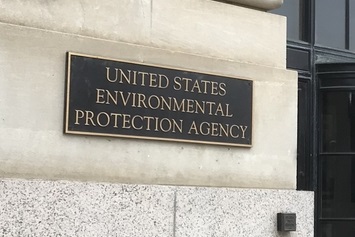In the second quarter (Q2), the EPA finalized 165 settlement agreements with companies small and large across the United States. This represents a decrease in enforcement actions—down from 188 penalties issued in Q1 for 2020. The actions taken resulted in $3,482,842 in fines. Here are some of the highlights.
TSCA Violations Yield Biggest Fine from EPA
The largest fine assessed by the EPA in Q2 was to a winter sports equipment manufacturing company to resolve Toxic Substances Control Act (TSCA) violations associated with the importation of noncompliant ski wax products containing per- and polyfluoroalkyl substances (PFAS). The company violated the TSCA Premanufacturing Notice requirements and Import Certification requirements when it imported ski wax products containing 6 different PFAS chemicals on at least 83 occasions that were not included on the TSCA Inventory or otherwise exempt for commercial purposes. The company was assessed a penalty of $375,625.
There were additional enforcement actions taken against 8 other entities for TSCA violations, with penalties that ranged from $500 to $49,000. In all, TSCA violations accounted for $518,140 in Q2.
Targeting Chemical Companies
A chemical manufacturer in Iowa was fined nearly $80,000 for violating the Clean Air Act’s (CAA) risk management plan (RMP). During its inspection at the facility, the EPA found that the company failed to include quantities of ammonia stored in railcars in the RMP. Additionally, the company failed to implement the Program 3 Prevention program—Prevention of Accidental Release.
A chemical production company in Ohio was penalized $52,426 for Emergency Planning and Community Right-to-Know Act (EPCRA) and Comprehensive Environmental Response, Compensation, and Liability Act (CERCLA) violations when it failed to notify the National Response Corporation (NRC) and the State Emergency Response Commission (SERC) of the facility’s release of chlorine.
Emphasizing Clean Water
The EPA cited 48 different entities for violations of the Clean Water Act (CWA), including oil and construction companies, for inadequate Spill Prevention, Control, and Countermeasure Plans (SPCCs), as well as towns and cities for National Pollutant Discharge Elimination System (NPDES) permit violations. The fines totaled $228,500 and ranged from $500 to $100,000.
EPCRA Violations Bringing Five-Figure Fines
The EPA continues its consistent enforcement for violations of EPCRA:
- An aerospace company in Washington was fined $66,300 for failing to report storage of a hazardous chemical at its facility.
- A synthetic chemical manufacturer in Kentucky was penalized $41,070 for failing to immediately notify the SERC and Local Emergency Planning Committee (LEPC) of the facility’s release of vinyl chloride in an amount equal to or greater than its reportable quantity (RQ).
- A chemical complex in Louisiana was fined $27,136 for failing to submit anthracene and phenanthrene on its Toxic Chemical Release Reporting (TRI) by a specific date.
- A commercial refrigerator supplier in Georgia was penalized $10,479 for failure to submit the TRI required for diphenylmethane diisocyanate by a specific date and failure to submit the required Emergency and Hazardous Chemical Inventory Form for diphenylmethane diisocyanate by a specific date.
FIFRA Violations
A pesticide distributor company in Washington was fined nearly $93,000 for violating the Federal Insecticide, Fungicide, and Rodenticide Act (FIFRA) by distributing misbranded pesticide products. An agricultural farm in Delaware was penalized $25,000 for FIFRA violations when it failed to comply with the act’s agriculture Worker Protection Standard and for failing to provide decontamination supplies to employees who worked in pesticide-treated areas.
$6.5 Million Proposed Settlement for Groundwater Violations
In addition to the finalized settlements in Q2, the EPA reached a $6.5 million settlement with 145 parties to clean up contaminated groundwater at a Superfund site in Southern California. Each party sent 1 to 3 tons of waste to the former location of a refrigerant and solvent recycling facility, which became a Superfund site in the late 1990s. Since then, the EPA has overseen the removal of more than 2,700 drums and more than 12,500 pounds of contaminants from the soil and groundwater.

